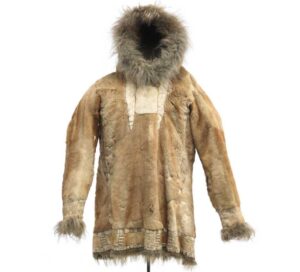Is Fake Fur Really
Your Best Environmental Choice?
So you finally invested in that great jacket or anorak you’ve been ogling and googling for months. But, as you’ve probably already noticed, there’s something funny about the fur-looking-thing lining the hood. What animal is it? Chances are it´s not from an animal at all. It is most likely, fake fur.
Fake fur gained popularity in the 90´s when animal rights activists started shaming animal fur. In the following decade, outdoor clothing brands caved to activism and replaced their commonly used coyote fur with a fake substitute. Perfectly fine if you like the look and mostly plan to sport your garment walking high street, but if you plan to explore the outback in a blistering snow storm, disappointment awaits.
In the age of wokeism, veganism and fear of action oriented activists – we tend to take the easy way out on the matter of choosing animal fur.
But in fact, sticking to your guns (pun intended) on the matter is justified by solid arguments. Unless you are a devoted vegan, of course. In that case, our reasoning is always wrong.
What is Fake Fur
Fake fur is plastic. You know, the material made from coal and petroleum. Fake fur is typically fibers made from acrylic and polyester, glued in place. It is not biodegradable and ends up in nature as micro plastics. Fake fur shed harmful fibers every time it is used or when you clean it. We find it in the ocean, rivers and lakes, harmfull to the creatures that live there.
The Natural Alternative
Real fur – or let us just call it fur – comes from animals. It is 100 percent natural, high performing, durable and completely biodegradable. Fur insulates by trapping heat and filtering wind. If cared for properly it will outlast fake fur by a huge margin. If you buy from a responsible source, it is also sustainable.
Which is warmer
Fur is performing at a level that no plastic fur can match. With it´s natural undercoat, the real deal is warmer. Further more it sheds moisture and snow much more efficiently than the fake stuff. Snow and water is contained close to the surface, and won’t melt and freeze between layers. By staying fluff allowing for air to circulate, fur will not clog and deflate like fake fur will. It dries quickly if it gets wet.

These two images illustrate the point quite well. Fur shed snow, remaining lofty with all it´s insulating properties intact, while the fake fur retain all precipitation, collapsing into a wet and useless mess, eventually turning into a frozen collar.
Made from animals
Those who chose fake fur do so because they think it´s better for the environment. But unless you object to killing animals all together, utilizing fur is by far your best choice – both for performance and when it comes to environmental impact. If purchased from a responsible and legal source, all fur comes from animals legally hunted or trapped according to strict regulations, in both North America and Europe.
Donor animals are not under threat of distinction or unnecessary suffering. They are hunted in numbers that rather protect species from overpopulation. For most hunters and trappers, selling fur is an important source of income that has sustained families of small rural communities for generations.
Choices
The outdoor industry is booming as more people want to experience and explore. “No such things as bad weather”, they proclaim –“ just the wrong clothing.”
True, but proper gear can make a huge difference. Mostly a question of comfort, but it can also be the difference between safe and sorry.
In the matter of fake fur, we doubt that your very life will ever depend on it. But if you’re concerned about the environment and well being of creatures big and small, you may want to think again. Because the fake stuff doesn’t come without negative impact to us all.
For shear performance we take our advice from the Sámi, Inuit and explorers alike. We go natural.
©2023 Basecamp North Team / MBibow


